Google Play Store
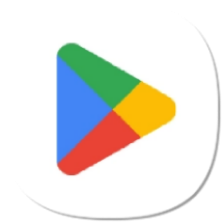
Google Play Store
233 downloads
49.1.32-31 [0] [PR] 840869066 (build 84913230)
598 downloads49.1.32-29 [0] [PR] 840869066 (build 84913220)
39 downloads49.1.32-23 [0] [PR] 840869066 (build 84913200)
45 downloads49.1.22-31 [0] [PR] 839551188 (build 84912230)
843 downloads49.1.22-29 [0] [PR] 839551188 (build 84912220)
86 downloads49.1.22-23 [0] [PR] 839551188 (build 84912200)
94 downloads48.9.30-31 [0] [PR] 834517506 (build 84893030)
542 downloads48.9.30-29 [0] [PR] 834517506 (build 84893020)
38 downloads48.9.30-23 [0] [PR] 834517506 (build 84893000)
27 downloads48.8.07-31 [0] [PR] 829632341 (build 84880730)
1178 downloads48.8.07-29 [0] [PR] 829632341 (build 84880720)
106 downloads48.8.07-23 [0] [PR] 829632341 (build 84880700)
62 downloads48.7.17-31 [0] [PR] 826582504 (build 84871730)
855 downloads48.7.17-29 [0] [PR] 826582504 (build 84871720)
93 downloads48.7.17-23 [0] [PR] 826582504 (build 84871700)
82 downloads48.6.19-31 [0] [PR] 825204670 (build 84861930)
901 downloads48.6.19-29 [0] [PR] 825204670 (build 84861920)
112 downloads48.6.19-23 [0] [PR] 825204670 (build 84861900)
95 downloads48.5.26-31 [0] [PR] 820950515 (build 84852630)
897 downloads48.5.26-29 [0] [PR] 820950515 (build 84852620)
135 downloads48.5.26-23 [0] [PR] 820950515 (build 84852600)
64 downloads48.5.23-31 [0] [PR] 820926732 (build 84852330)
385 downloads48.5.23-29 [0] [PR] 820926732 (build 84852320)
58 downloads48.5.23-23 [0] [PR] 820926732 (build 84852300)
66 downloads48.4.38-31 [0] [PR] 819773895 (build 84843830)
450 downloads48.4.38-29 [0] [PR] 819773895 (build 84843820)
62 downloads48.4.38-23 [0] [PR] 819773895 (build 84843800)
56 downloads48.3.25-31 [0] [PR] 816253320 (build 84832530)
771 downloads48.3.25-29 [0] [PR] 816253320 (build 84832520)
71 downloads48.3.25-23 [0] [PR] 816253320 (build 84832500)
54 downloads48.2.19-31 [0] [PR] 813001354 (build 84821930)
701 downloads48.2.19-31 [0] [PR] 813001354 (build 84821930)
274 downloads48.2.19-29 [0] [PR] 813001354 (build 84821920)
100 downloads48.2.19-23 [0] [PR] 813001354 (build 84821900)
71 downloads48.1.29-31 [0] [PR] 811298765 (build 84812930)
206 downloads48.1.29-31 [0] [PR] 811298765 (build 84812930)
276 downloads48.1.29-29 [0] [PR] 811298765 (build 84812920)
55 downloads48.1.29-23 [0] [PR] 811298765 (build 84812900)
53 downloads48.1.28-31 [0] [PR] 811267161 (build 84812830)
814 downloads48.1.28-29 [0] [PR] 811267161 (build 84812820)
54 downloads48.1.28-23 [0] [PR] 811267161 (build 84812800)
59 downloads48.1.17-31 [0] [PR] 809140548 (build 84811730)
312 downloads48.1.17-29 [0] [PR] 809140548 (build 84811720)
63 downloads48.1.17-23 [0] [PR] 809140548 (build 84811700)
48 downloads48.0.20-31 [0] [PR] 808025740 (build 84802030)
240 downloads48.0.20-29 [0] [PR] 808025740 (build 84802020)
38 downloads48.0.20-23 [0] [PR] 808025740 (build 84802000)
24 downloads48.0.19-31 [0] [PR] 807990555 (build 84801930)
670 downloads48.0.19-31 [0] [PR] 807990555 (build 84801930)
241 downloads48.0.19-29 [0] [PR] 807990555 (build 84801920)
91 downloads48.0.19-23 [0] [PR] 807990555 (build 84801900)
107 downloads47.9.41-31 [0] [PR] 806466805 (build 84794130)
414 downloads47.9.41-29 [0] [PR] 806466805 (build 84794120)
58 downloads47.9.41-23 [0] [PR] 806466805 (build 84794100)
88 downloads47.9.33-31 [0] [PR] 805042632 (build 84793330)
196 downloads47.9.33-29 [0] [PR] 805042632 (build 84793320)
39 downloads47.9.33-23 [0] [PR] 805042632 (build 84793300)
53 downloads47.9.30-31 [0] [PR] 805004130 (build 84793030)
585 downloads47.9.30-31 [0] [PR] 805004130 (build 84793030)
292 downloads47.9.30-29 [0] [PR] 805004130 (build 84793020)
245 downloads47.8.19-31 [0] [PR] 801043932 (build 84781930)
597 downloads47.8.19-29 [0] [PR] 801043932 (build 84781920)
69 downloads47.8.19-23 [0] [PR] 801043932 (build 84781900)
81 downloads47.7.20-31 [0] [PR] 798338399 (build 84772030)
234 downloads47.7.20-29 [0] [PR] 798338399 (build 84772020)
51 downloads47.7.20-23 [0] [PR] 798338399 (build 84772000)
48 downloads47.7.19-31 [0] [PR] 798294419 (build 84771930)
359 downloads47.7.19-31 [0] [PR] 798294419 (build 84771930)
352 downloads47.7.19-29 [0] [PR] 798294419 (build 84771920)
80 downloads47.7.19-23 [0] [PR] 798294419 (build 84771900)
66 downloads47.6.29-29 [0] [PR] 799585638 (build 84762920)
357 downloads47.6.28-31 [0] [PR] 797877006 (build 84762830)
361 downloads47.6.28-31 [0] [PR] 797877006 (build 84762830)
470 downloads47.6.28-29 [0] [PR] 797877006 (build 84762820)
77 downloads47.6.28-23 [0] [PR] 797877006 (build 84762800)
92 downloads47.6.19-31 [0] [PR] 795567268 (build 84761930)
348 downloads47.6.19-31 [0] [PR] 795567268 (build 84761930)
301 downloads47.6.19-29 [0] [PR] 795567268 (build 84761920)
83 downloads47.6.19-23 [0] [PR] 795567268 (build 84761900)
99 downloads47.5.19-31 [0] [PR] 793029697 (build 84751930)
601 downloads47.5.19-31 [0] [PR] 793029697 (build 84751930)
260 downloads47.5.19-29 [0] [PR] 793029697 (build 84751920)
96 downloads47.5.19-23 [0] [PR] 793029697 (build 84751900)
76 downloads47.4.32-31 [0] [PR] 792418949 (build 84743230)
45 downloads47.4.32-23 [0] [PR] 792418949 (build 84743200)
99 downloads47.4.31-31 [0] [PR] 792372478 (build 84743130)
263 downloads47.4.31-31 [0] [PR] 792372478 (build 84743130)
325 downloads47.4.31-29 [0] [PR] 792372478 (build 84743120)
117 downloads47.4.31-23 [0] [PR] 792372478 (build 84743100)
78 downloads47.3.30-31 [0] [PR] 789473277 (build 84733030)
104 downloads47.3.30-31 [0] [PR] 789473277 (build 84733030)
264 downloads47.3.29-31 [0] [PR] 789407802 (build 84732930)
581 downloads47.3.29-29 [0] [PR] 789407802 (build 84732920)
54 downloads47.3.29-23 [0] [PR] 789407802 (build 84732900)
52 downloads47.3.25-31 [0] [PR] 788169061 (build 84732530)
307 downloads47.2.20-31 [0] [PR] 784695832 (build 84722030)
271 downloads47.2.20-31 [0] [PR] 784695832 (build 84722030)
705 downloads47.2.20-29 [0] [PR] 784695832 (build 84722020)
110 downloads47.2.20-23 [0] [PR] 784695832 (build 84722000)
77 downloads47.1.21-31 [0] [PR] 782063055 (build 84712130)
591 downloads47.1.21-31 [0] [PR] 782063055 (build 84712130)
441 downloads47.0.14-31 [0] [PR] 778650234 (build 84701430)
198 downloads47.0.13-31 [0] [PR] 778616651 (build 84701330)
485 downloads47.0.13-31 [0] [PR] 778616651 (build 84701330)
343 downloads46.9.20-31 [0] [PR] 776704244 (build 84692030)
209 downloads46.9.20-31 [0] [PR] 776704244 (build 84692030)
329 downloads46.9.20-29 [0] [PR] 776704244 (build 84692020)
151 downloads46.9.20-23 [0] [PR] 776704244 (build 84692000)
151 downloads46.8.29-31 [0] [PR] 776173854 (build 84682930)
44 downloads46.8.29-31 [0] [PR] 776173854 (build 84682930)
616 downloads46.8.29-29 [0] [PR] 776173854 (build 84682920)
92 downloads46.8.29-23 [0] [PR] 776173854 (build 84682900)
94 downloads46.7.24-31 [0] [PR] 773845571 (build 84672430)
64 downloads46.7.24-29 [0] [PR] 773845571 (build 84672420)
32 downloads46.7.24-23 [0] [PR] 773845571 (build 84672400)
93 downloads46.6.21-31 [0] [PR] 768249169 (build 84662130)
114 downloads46.6.21-31 [0] [PR] 768249169 (build 84662130)
267 downloads46.6.21-29 [0] [PR] 768249169 (build 84662120)
101 downloads46.6.21-23 [0] [PR] 768249169 (build 84662100)
91 downloads46.5.20-31 [0] [PR] 765318715 (build 84652030)
70 downloads46.5.19-31 [0] [PR] 765282348 (build 84651930)
323 downloads46.5.19-29 [0] [PR] 765282348 (build 84651920)
55 downloads46.5.19-23 [0] [PR] 765282348 (build 84651900)
88 downloads46.4.39-31 [0] [PR] 763981690 (build 84643930)
160 downloads46.4.38-31 [0] [PR] 763949850 (build 84643830)
233 downloads46.3.23-31 [0] [PR] 761635678 (build 84632330)
246 downloads46.3.23-29 [0] [PR] 761635678 (build 84632320)
74 downloads46.3.23-23 [0] [PR] 761635678 (build 84632300)
48 downloads46.3.21-31 [0] [PR] 759730146 (build 84632130)
337 downloads46.3.21-29 [0] [PR] 759730146 (build 84632120)
117 downloads46.3.21-23 [0] [PR] 759730146 (build 84632100)
99 downloads46.2.19-31 [0] [PR] 756856054 (build 84621930)
227 downloads46.2.19-29 [0] [PR] 756856054 (build 84621920)
76 downloads46.2.19-23 [0] [PR] 756856054 (build 84621900)
80 downloads46.1.40-31 [0] [PR] 758255830 (build 84614030)
373 downloads46.1.40-29 [0] [PR] 758255830 (build 84614020)
113 downloads46.1.40-23 [0] [PR] 758255830 (build 84614000)
108 downloads46.1.39-31 [0] [PR] 758209869 (build 84613930)
314 downloads46.1.39-29 [0] [PR] 758209869 (build 84613920)
65 downloads46.1.39-23 [0] [PR] 758209869 (build 84613900)
113 downloads46.1.37-31 [0] [PR] 755161904 (build 84613730)
264 downloads46.1.37-29 [0] [PR] 755161904 (build 84613720)
75 downloads46.1.37-23 [0] [PR] 755161904 (build 84613700)
100 downloads46.0.20-31 [0] [PR] 751545767 (build 84602030)
247 downloads46.0.19-31 [0] [PR] 751509063 (build 84601930)
182 downloads45.9.19-31 [0] [PR] 749105629 (build 84591930)
245 downloads45.9.19-29 [0] [PR] 749105629 (build 84591920)
69 downloads45.9.19-23 [0] [PR] 749105629 (build 84591900)
46 downloads45.8.21-31 [0] [PR] 747433787 (build 84582130)
304 downloads45.8.21-29 [0] [PR] 747433787 (build 84582120)
67 downloads45.8.21-23 [0] [PR] 747433787 (build 84582100)
58 downloads45.7.17-31 [0] [PR] 744026385 (build 84571730)
322 downloads45.7.17-29 [0] [PR] 744026385 (build 84571720)
78 downloads45.7.17-23 [0] [PR] 744026385 (build 84571700)
139 downloads45.6.19-31 [0] [PR] 741616401 (build 84561930)
406 downloads45.6.19-29 [0] [PR] 741616401 (build 84561920)
61 downloads45.6.19-23 [0] [PR] 741616401 (build 84561900)
77 downloads45.5.24-31 [0] [PR] 740438825 (build 84552430)
124 downloads45.5.24-29 [0] [PR] 740438825 (build 84552420)
83 downloads45.5.24-23 [0] [PR] 740438825 (build 84552400)
53 downloads45.5.23-31 [0] [PR] 740399850 (build 84552330)
551 downloads45.5.23-29 [0] [PR] 740399850 (build 84552320)
73 downloads45.5.23-23 [0] [PR] 740399850 (build 84552300)
89 downloads45.4.27-31 [0] [PR] 737751390 (build 84542730)
214 downloads45.4.27-29 [0] [PR] 737751390 (build 84542720)
54 downloads45.4.27-23 [0] [PR] 737751390 (build 84542700)
76 downloads45.4.26-31 [0] [PR] 737705585 (build 84542630)
396 downloads45.4.26-29 [0] [PR] 737705585 (build 84542620)
76 downloads45.4.26-23 [0] [PR] 737705585 (build 84542600)
51 downloads45.3.22-31 [0] [PR] 736226858 (build 84532230)
85 downloads45.3.22-29 [0] [PR] 736226858 (build 84532220)
52 downloads45.3.22-23 [0] [PR] 736226858 (build 84532200)
33 downloads45.3.21-31 [0] [PR] 736181551 (build 84532130)
213 downloads45.3.21-31 [0] [PR] 736181551 (build 84532130)
240 downloads45.3.21-29 [0] [PR] 736181551 (build 84532120)
85 downloads45.3.21-23 [0] [PR] 736181551 (build 84532100)
62 downloads45.3.17-31 [0] [PR] 735553250 (build 84531730)
39 downloads45.3.17-29 [0] [PR] 735553250 (build 84531720)
17 downloads45.3.17-23 [0] [PR] 735553250 (build 84531700)
19 downloads45.2.20-31 [0] [PR] 732248732 (build 84522030)
318 downloads45.2.20-29 [0] [PR] 732248732 (build 84522020)
79 downloads45.2.20-23 [0] [PR] 732248732 (build 84522000)
51 downloads45.2.19-31 [0] [PR] 732221263 (build 84521930)
611 downloads45.2.19-29 [0] [PR] 732221263 (build 84521920)
91 downloads45.2.19-23 [0] [PR] 732221263 (build 84521900)
92 downloads45.1.12-31 [0] [PR] 729649519 (build 84511230)
113 downloads45.1.12-31 [0] [PR] 729649519 (build 84511230)
404 downloads45.1.12-29 [0] [PR] 729649519 (build 84511220)
54 downloads45.1.12-23 [0] [PR] 729649519 (build 84511200)
44 downloads45.0.22-31 [0] [PR] 728366238 (build 84502230)
52 downloads45.0.22-29 [0] [PR] 728366238 (build 84502220)
72 downloads45.0.21-31 [0] [PR] 728331212 (build 84502130)
534 downloads45.0.21-29 [0] [PR] 728331212 (build 84502120)
121 downloads45.0.21-23 [0] [PR] 728331212 (build 84502100)
107 downloads44.9.20-31 [0] [PR] 725719186 (build 84492030)
64 downloads44.9.20-29 [0] [PR] 725719186 (build 84492020)
28 downloads44.9.20-23 [0] [PR] 725719186 (build 84492000)
43 downloads44.9.19-31 [0] [PR] 725679144 (build 84491930)
489 downloads44.9.19-29 [0] [PR] 725679144 (build 84491920)
110 downloads44.9.19-23 [0] [PR] 725679144 (build 84491900)
93 downloads44.8.16-31 [0] [PR] 722838159 (build 84481630)
73 downloads44.8.16-29 [0] [PR] 722838159 (build 84481620)
77 downloads44.8.16-23 [0] [PR] 722838159 (build 84481600)
56 downloads44.8.15-31 [0] [PR] 722808866 (build 84481530)
383 downloads44.8.15-31 [0] [PR] 722808866 (build 84481530)
58 downloads44.8.15-29 [0] [PR] 722808866 (build 84481520)
34 downloads44.8.15-23 [0] [PR] 722808866 (build 84481500)
31 downloads44.7.24-31 [0] [PR] 719495724 (build 84472430)
709 downloads44.7.24-29 [0] [PR] 719495724 (build 84472420)
98 downloads44.7.24-23 [0] [PR] 719495724 (build 84472400)
64 downloads44.6.26-23 [0] [PR] 718147276 (build 84462600)
213 downloads44.6.25-31 [0] [PR] 718103699 (build 84462530)
470 downloads44.6.25-29 [0] [PR] 718103699 (build 84462520)
104 downloads44.6.25-23 [0] [PR] 718103699 (build 84462500)
72 downloads44.5.23-31 [0] [PR] 715840561 (build 84452330)
550 downloads44.5.23-29 [0] [PR] 715840561 (build 84452320)
114 downloads44.5.23-23 [0] [PR] 715840561 (build 84452300)
110 downloads44.4.20-31 [0] [PR] 711873237 (build 84442030)
351 downloads44.4.20-29 [0] [PR] 711873237 (build 84442020)
58 downloads44.4.20-23 [0] [PR] 711873237 (build 84442000)
73 downloads44.4.19-31 [0] [PR] 711817052 (build 84441930)
456 downloads44.4.19-29 [0] [PR] 711817052 (build 84441920)
242 downloads44.4.19-23 [0] [PR] 711817052 (build 84441900)
68 downloads44.1.17-31 [0] [PR] 705988262 (build 84411730)
877 downloads44.1.17-29 [0] [PR] 705988262 (build 84411720)
150 downloads44.1.17-23 [0] [PR] 705988262 (build 84411700)
139 downloads44.0.29-31 [0] [PR] 705357740 (build 84402930)
76 downloads44.0.29-29 [0] [PR] 705357740 (build 84402920)
52 downloads44.0.29-23 [0] [PR] 705357740 (build 84402900)
49 downloads44.0.28-31 [0] [PR] 705297086 (build 84402830)
421 downloads44.0.28-29 [0] [PR] 705297086 (build 84402820)
92 downloads44.0.28-23 [0] [PR] 705297086 (build 84402800)
79 downloads43.9.18-31 [0] [PR] 700761362 (build 84391830)
312 downloads43.9.18-29 [0] [PR] 700761362 (build 84391820)
82 downloads43.9.18-23 [0] [PR] 700761362 (build 84391800)
122 downloads43.9.17-31 [0] [PR] 700738295 (build 84391730)
286 downloads43.9.17-29 [0] [PR] 700738295 (build 84391720)
214 downloads43.9.17-23 [0] [PR] 700738295 (build 84391700)
64 downloads43.7.20-31 [0] [PR] 696990833 (build 84372030)
272 downloads43.7.20-29 [0] [PR] 696990833 (build 84372020)
63 downloads43.7.20-23 [0] [PR] 696990833 (build 84372000)
117 downloads43.7.19-31 [0] [PR] 696960549 (build 84371930)
403 downloads43.7.19-29 [0] [PR] 696960549 (build 84371920)
106 downloads43.7.19-23 [0] [PR] 696960549 (build 84371900)
58 downloads43.6.34-31 [0] [PR] 696659122 (build 84363430)
471 downloads43.6.34-29 [0] [PR] 696659122 (build 84363420)
96 downloads43.6.34-23 [0] [PR] 696659122 (build 84363400)
112 downloads43.6.20-31 [0] [PR] 694591074 (build 84362030)
258 downloads43.6.20-29 [0] [PR] 694591074 (build 84362020)
58 downloads43.6.20-23 [0] [PR] 694591074 (build 84362000)
81 downloads43.6.17-31 [8] [PR] 694591168 (build 84361718)
105 downloads43.6.17-23 [8] [PR] 694591168 (build 84361708)
104 downloads43.5.26-31 [0] [PR] 693462648 (build 84352630)
410 downloads43.5.26-29 [0] [PR] 693462648 (build 84352620)
62 downloads43.5.26-23 [0] [PR] 693462648 (build 84352600)
58 downloads43.4.25-31 [0] [PR] 691944128 (build 84342530)
55 downloads43.4.23-31 [0] [PR] 689948425 (build 84342330)
282 downloads43.4.23-29 [0] [PR] 689948425 (build 84342320)
78 downloads43.4.23-23 [0] [PR] 689948425 (build 84342300)
77 downloads43.3.32-31 [0] [PR] 689609405 (build 84333230)
308 downloads43.3.32-29 [0] [PR] 689609405 (build 84333220)
51 downloads43.3.32-23 [0] [PR] 689609405 (build 84333200)
65 downloads43.2.17-31 [0] [PR] 686239451 (build 84321730)
389 downloads43.2.17-29 [0] [PR] 686239451 (build 84321720)
91 downloads43.2.17-23 [0] [PR] 686239451 (build 84321700)
86 downloads43.2.16-31 [0] [PR] 686207179 (build 84321630)
384 downloads43.2.16-29 [0] [PR] 686207179 (build 84321620)
102 downloads43.2.16-23 [0] [PR] 686207179 (build 84321600)
51 downloads43.1.20-31 [0] [PR] 682449396 (build 84312030)
99 downloads43.1.20-29 [0] [PR] 682449396 (build 84312020)
35 downloads43.1.20-23 [0] [PR] 682449396 (build 84312000)
34 downloads43.1.19-31 [0] [PR] 682411274 (build 84311930)
357 downloads43.1.19-29 [0] [PR] 682411274 (build 84311920)
102 downloads43.1.19-23 [0] [PR] 682411274 (build 84311900)
102 downloads43.0.19-31 [0] [PR] 679715077 (build 84301930)
70 downloads43.0.19-29 [0] [PR] 679715077 (build 84301920)
36 downloads43.0.19-23 [0] [PR] 679715077 (build 84301900)
33 downloads43.0.18-31 [0] [PR] 679685942 (build 84301830)
371 downloads43.0.16-31 [8] [PR] 679686435 (build 84301618)
85 downloads42.9.16-31 [0] [PR] 677837050 (build 84291630)
330 downloads42.9.16-29 [0] [PR] 677837050 (build 84291620)
70 downloads42.9.16-23 [0] [PR] 677837050 (build 84291600)
63 downloads42.8.22-31 [0] [PR] 675222817 (build 84282230)
248 downloads42.8.22-29 [0] [PR] 675222817 (build 84282220)
61 downloads42.8.22-23 [0] [PR] 675222817 (build 84282200)
54 downloads42.8.21-31 [0] [PR] 675189312 (build 84282130)
418 downloads42.8.21-29 [0] [PR] 675189312 (build 84282120)
112 downloads42.8.21-23 [0] [PR] 675189312 (build 84282100)
137 downloads42.7.20-31 [0] [PR] 671871718 (build 84272030)
60 downloads42.7.20-29 [0] [PR] 671871718 (build 84272020)
56 downloads42.7.20-23 [0] [PR] 671871718 (build 84272000)
90 downloads42.7.19-31 [0] [PR] 671848019 (build 84271930)
481 downloads42.7.19-29 [0] [PR] 671848019 (build 84271920)
125 downloads42.7.19-23 [0] [PR] 671848019 (build 84271900)
98 downloads42.6.22-31 [0] [PR] 670642294 (build 84262230)
285 downloads42.6.22-29 [0] [PR] 670642294 (build 84262220)
67 downloads42.6.22-23 [0] [PR] 670642294 (build 84262200)
64 downloads42.5.16-31 [0] [PR] 667688494 (build 84251630)
138 downloads42.5.16-29 [0] [PR] 667688494 (build 84251620)
56 downloads42.5.16-23 [0] [PR] 667688494 (build 84251600)
90 downloads42.5.15-31 [0] [PR] 667654268 (build 84251530)
336 downloads42.5.15-29 [0] [PR] 667654268 (build 84251520)
179 downloads42.5.15-23 [0] [PR] 667654268 (build 84251500)
68 downloads42.4.22-31 [0] [PR] 663941805 (build 84242230)
303 downloads42.4.22-29 [0] [PR] 663941805 (build 84242220)
70 downloads42.4.22-23 [0] [PR] 663941805 (build 84242200)
67 downloads42.3.24-31 [0] [PR] 662982912 (build 84232430)
225 downloads42.3.24-29 [0] [PR] 662982912 (build 84232420)
61 downloads42.3.24-23 [0] [PR] 662982912 (build 84232400)
71 downloads42.3.20-31 [0] [PR] 661415507 (build 84232030)
342 downloads42.3.20-29 [0] [PR] 661415507 (build 84232020)
117 downloads42.3.20-23 [0] [PR] 661415507 (build 84232000)
120 downloads42.2.28-31 [0] [PR] 660641439 (build 84222830)
90 downloads42.2.28-29 [0] [PR] 660641439 (build 84222820)
47 downloads42.2.28-23 [0] [PR] 660641439 (build 84222800)
77 downloads42.2.27-31 [0] [PR] 660620715 (build 84222730)
256 downloads42.2.27-29 [0] [PR] 660620715 (build 84222720)
62 downloads42.2.27-23 [0] [PR] 660620715 (build 84222700)
69 downloads42.1.28-31 [0] [PR] 658871979 (build 84212830)
90 downloads42.1.28-29 [0] [PR] 658871979 (build 84212820)
71 downloads42.1.28-23 [0] [PR] 658871979 (build 84212800)
65 downloads42.1.27-31 [0] [PR] 658840558 (build 84212730)
285 downloads42.1.27-29 [0] [PR] 658840558 (build 84212720)
80 downloads42.1.27-23 [0] [PR] 658840558 (build 84212700)
74 downloads42.1.21-31 [0] [PR] 656577579 (build 84212130)
202 downloads42.1.21-29 [0] [PR] 656577579 (build 84212120)
51 downloads42.1.21-23 [0] [PR] 656577579 (build 84212100)
110 downloads42.0.20-31 [0] [PR] 654119317 (build 84202030)
290 downloads42.0.20-29 [0] [PR] 654119317 (build 84202020)
72 downloads42.0.20-23 [0] [PR] 654119317 (build 84202000)
83 downloads41.9.17-31 [0] [PR] 652617032 (build 84191730)
258 downloads41.9.17-29 [0] [PR] 652617032 (build 84191720)
78 downloads41.9.17-23 [0] [PR] 652617032 (build 84191700)
86 downloads41.8.15-31 [0] [PR] 649236367 (build 84181530)
60 downloads41.8.15-29 [0] [PR] 649236367 (build 84181520)
64 downloads41.8.15-23 [0] [PR] 649236367 (build 84181500)
29 downloads41.8.14-31 [0] [PR] 649217104 (build 84181430)
308 downloads41.8.14-29 [0] [PR] 649217104 (build 84181420)
59 downloads41.8.14-23 [0] [PR] 649217104 (build 84181400)
151 downloads41.7.17-31 [0] [PR] 647795278 (build 84171730)
38 downloads41.7.17-29 [0] [PR] 647795278 (build 84171720)
44 downloads41.7.17-23 [0] [PR] 647795278 (build 84171700)
35 downloads41.7.16-31 [0] [PR] 647773006 (build 84171630)
282 downloads41.7.16-29 [0] [PR] 647773006 (build 84171620)
92 downloads41.7.16-23 [0] [PR] 647773006 (build 84171600)
56 downloads41.6.30-31 [0] [PR] 647093559 (build 84163030)
124 downloads41.6.30-29 [0] [PR] 647093559 (build 84163020)
53 downloads41.6.30-23 [0] [PR] 647093559 (build 84163000)
49 downloads41.6.29-31 [0] [PR] 647065183 (build 84162930)
320 downloads41.6.29-29 [0] [PR] 647065183 (build 84162920)
85 downloads41.6.29-23 [0] [PR] 647065183 (build 84162900)
102 downloads41.6.26-31 [0] [PR] 646692199 (build 84162630)
110 downloads41.6.26-29 [0] [PR] 646692199 (build 84162620)
37 downloads41.6.26-23 [0] [PR] 646692199 (build 84162600)
29 downloads41.5.30-31 [0] [PR] 644528588 (build 84153030)
92 downloads41.5.30-29 [0] [PR] 644528588 (build 84153020)
41 downloads41.5.30-23 [0] [PR] 644528588 (build 84153000)
61 downloads41.5.29-31 [0] [PR] 644500286 (build 84152930)
241 downloads41.5.29-29 [0] [PR] 644500286 (build 84152920)
53 downloads41.5.29-23 [0] [PR] 644500286 (build 84152900)
55 downloads41.5.21-31 [0] [PR] 643473157 (build 84152130)
80 downloads41.5.21-29 [0] [PR] 643473157 (build 84152120)
38 downloads41.5.21-23 [0] [PR] 643473157 (build 84152100)
45 downloads41.4.20-31 [0] [PR] 641347447 (build 84142030)
128 downloads41.4.20-29 [0] [PR] 641347447 (build 84142020)
45 downloads41.4.20-23 [0] [PR] 641347447 (build 84142000)
41 downloads41.4.19-31 [0] [PR] 641318945 (build 84141930)
231 downloads41.4.19-29 [0] [PR] 641318945 (build 84141920)
62 downloads41.4.19-23 [0] [PR] 641318945 (build 84141900)
52 downloads41.3.26-31 [0] [PR] 640561785 (build 84132630)
185 downloads41.3.26-29 [0] [PR] 640561785 (build 84132620)
45 downloads41.3.26-23 [0] [PR] 640561785 (build 84132600)
53 downloads41.2.21-31 [0] [PR] 636997666 (build 84122130)
289 downloads41.2.21-29 [0] [PR] 636997666 (build 84122120)
83 downloads41.2.21-23 [0] [PR] 636997666 (build 84122100)
111 downloads41.1.20-31 [0] [PR] 636222442 (build 84112030)
46 downloads41.1.20-29 [0] [PR] 636222442 (build 84112020)
30 downloads41.1.20-23 [0] [PR] 636222442 (build 84112000)
57 downloads41.1.19-31 [0] [PR] 636190750 (build 84111930)
358 downloads41.1.19-29 [0] [PR] 636190750 (build 84111920)
75 downloads41.1.19-23 [0] [PR] 636190750 (build 84111900)
95 downloads41.1.16-31 [0] [PR] 634882524 (build 84111630)
133 downloads41.1.16-29 [0] [PR] 634882524 (build 84111620)
39 downloads41.1.16-23 [0] [PR] 634882524 (build 84111600)
46 downloads41.0.29-31 [0] [PR] 633745628 (build 84102930)
68 downloads41.0.29-29 [0] [PR] 633745628 (build 84102920)
55 downloads41.0.29-23 [0] [PR] 633745628 (build 84102900)
63 downloads40.9.28-31 [0] [PR] 632018617 (build 84092830)
169 downloads40.9.28-29 [0] [PR] 632018617 (build 84092820)
106 downloads40.9.28-23 [0] [PR] 632018617 (build 84092800)
82 downloads40.9.25-31 [0] [PR] 631214518 (build 84092530)
195 downloads40.9.25-29 [0] [PR] 631214518 (build 84092520)
84 downloads40.9.25-23 [0] [PR] 631214518 (build 84092500)
33 downloads40.8.37-31 [0] [PR] 629868820 (build 84083730)
92 downloads40.8.37-29 [0] [PR] 629868820 (build 84083720)
48 downloads40.8.37-23 [0] [PR] 629868820 (build 84083700)
42 downloads40.8.36-31 [0] [PR] 629845725 (build 84083630)
323 downloads40.8.36-29 [0] [PR] 629845725 (build 84083620)
59 downloads40.8.36-23 [0] [PR] 629845725 (build 84083600)
33 downloads40.7.30-31 [0] [PR] 628565650 (build 84073030)
111 downloads40.7.30-29 [0] [PR] 628565650 (build 84073020)
41 downloads40.7.30-23 [0] [PR] 628565650 (build 84073000)
23 downloads40.7.29-31 [0] [PR] 628532116 (build 84072930)
156 downloads40.7.29-29 [0] [PR] 628532116 (build 84072920)
64 downloads40.7.29-23 [0] [PR] 628532116 (build 84072900)
59 downloads40.7.26-31 [0] [PR] 627080733 (build 84072630)
158 downloads40.7.26-29 [0] [PR] 627080733 (build 84072620)
50 downloads40.7.26-23 [0] [PR] 627080733 (build 84072600)
40 downloads40.6.32-31 [0] [PR] 626507036 (build 84063230)
124 downloads40.6.32-29 [0] [PR] 626507036 (build 84063220)
40 downloads40.6.32-23 [0] [PR] 626507036 (build 84063200)
50 downloads40.6.31-31 [0] [PR] 626489609 (build 84063130)
148 downloads40.6.31-29 [0] [PR] 626489609 (build 84063120)
53 downloads40.6.31-23 [0] [PR] 626489609 (build 84063100)
55 downloads40.6.28-31 [0] [PR] 625422852 (build 84062830)
143 downloads40.6.28-29 [0] [PR] 625422852 (build 84062820)
44 downloads40.6.28-23 [0] [PR] 625422852 (build 84062800)
46 downloads40.5.30-31 [0] [PR] 623475044 (build 84053030)
192 downloads40.5.30-29 [0] [PR] 623475044 (build 84053020)
46 downloads40.5.30-23 [0] [PR] 623475044 (build 84053000)
45 downloads40.5.24-31 [0] [PR] 622874113 (build 84052430)
67 downloads40.5.24-29 [0] [PR] 622874113 (build 84052420)
37 downloads40.5.24-23 [0] [PR] 622874113 (build 84052400)
30 downloads40.4.31-31 [0] [PR] 621249419 (build 84043130)
201 downloads40.4.31-29 [0] [PR] 621249419 (build 84043120)
49 downloads40.4.31-23 [0] [PR] 621249419 (build 84043100)
69 downloads40.3.31-31 [0] [PR] 619730322 (build 84033130)
238 downloads40.3.31-29 [0] [PR] 619730322 (build 84033120)
52 downloads40.3.31-23 [0] [PR] 619730322 (build 84033100)
46 downloads40.3.25-31 [0] [PR] 618344061 (build 84032530)
73 downloads40.3.25-29 [0] [PR] 618344061 (build 84032520)
34 downloads40.3.25-23 [0] [PR] 618344061 (build 84032500)
37 downloads40.2.32-31 [0] [PR] 617727184 (build 84023230)
163 downloads40.2.32-29 [0] [PR] 617727184 (build 84023220)
188 downloads40.2.32-23 [0] [PR] 617727184 (build 84023200)
115 downloads40.2.29-29 [0] [PR] 616934232 (build 84022920)
186 downloads40.2.29-23 [0] [PR] 616934232 (build 84022900)
87 downloads40.2.26-31 [0] [PR] 616858441 (build 84022630)
90 downloads40.2.26-29 [0] [PR] 616858441 (build 84022620)
118 downloads0.3.4.40226 (build 84022608)
1170 downloads40.2.26-23 [0] [PR] 616858441 (build 84022600)
46 downloads40.1.20-31 [0] [PR] 614033715 (build 84012030)
84 downloads40.1.20-29 [0] [PR] 614033715 (build 84012020)
31 downloads40.1.20-23 [0] [PR] 614033715 (build 84012000)
109 downloads40.1.19-31 [0] [PR] 614006008 (build 84011930)
311 downloads40.1.19-29 [0] [PR] 614006008 (build 84011920)
84 downloads40.1.19-29 [0] [PR] 614006008 (build 84011920)
43 downloads40.1.19-23 [0] [PR] 614006008 (build 84011900)
48 downloads40.0.13-31 [0] [PR] 612537281 (build 84001330)
280 downloads40.0.13-29 [0] [PR] 612537281 (build 84001320)
189 downloads40.0.13-23 [0] [PR] 612537281 (build 84001300)
151 downloads40.0.10-31 [8] [PR] 611641217 (build 84001018)
55 downloads40.0.10-23 [8] [PR] 611641217 (build 84001008)
95 downloads39.9.32-31 [0] [PR] 610896898 (build 83993230)
42 downloads39.9.32-29 [0] [PR] 610896898 (build 83993220)
41 downloads39.9.32-23 [0] [PR] 610896898 (build 83993200)
52 downloads39.9.31-31 [0] [PR] 610866660 (build 83993130)
209 downloads39.9.31-29 [0] [PR] 610866660 (build 83993120)
126 downloads39.9.31-29 [0] [PR] 610866660 (build 83993120)
160 downloads39.8.19-31 [0] [PR] 607805846 (build 83981930)
93 downloads39.8.19-29 [0] [PR] 607805846 (build 83981920)
93 downloads39.8.19-29 [0] [PR] 607805846 (build 83981920)
135 downloads39.7.37-31 [0] [PR] 609854437 (build 83973730)
64 downloads39.7.37-29 [0] [PR] 609854437 (build 83973720)
40 downloads39.7.37-21 [0] [PR] 609854437 (build 83973710)
1194 downloads39.7.34-31 [0] [PR] 606456090 (build 83973430)
91 downloads39.7.34-29 [0] [PR] 606456090 (build 83973420)
64 downloads39.7.34-21 [0] [PR] 606456090 (build 83973410)
492 downloads39.5.18-29 [0] [PR] 602869603 (build 83951820)
285 downloads39.4.23-29 [0] [PR] 599960685 (build 83942320)
85 downloads39.4.23-21 [0] [PR] 599960685 (build 83942310)
204 downloads39.2.37-29 [0] [PR] 597374538 (build 83923720)
195 downloads39.2.37-21 [0] [PR] 597374538 (build 83923710)
85 downloads39.2.29-23 [8] [PR] 597007207 (build 83922908)
64 downloads39.1.26-29 [0] [PR] 596040089 (build 83912620)
158 downloads39.1.26-21 [0] [PR] 596040089 (build 83912610)
117 downloads39.1.21-29 [0] [PR] 594053428 (build 83912120)
206 downloads39.1.21-21 [0] [PR] 594053428 (build 83912110)
92 downloads38.8.26-29 [0] [PR] 592337964 (build 83882620)
86 downloads38.8.26-21 [0] [PR] 592337964 (build 83882610)
59 downloads38.8.24-29 [0] [PR] 591260044 (build 83882420)
321 downloads38.8.24-21 [0] [PR] 591260044 (build 83882410)
254 downloads38.8.21-29 [0] [PR] 589843983 (build 83882120)
95 downloads38.8.21-21 [0] [PR] 589843983 (build 83882110)
76 downloads38.7.35-29 [0] [PR] 587857672 (build 83873520)
123 downloads38.7.35-21 [0] [PR] 587857672 (build 83873510)
77 downloads38.6.10-29 [0] [PR] 585796312 (build 83861020)
152 downloads38.6.10-21 [0] [PR] 585796312 (build 83861010)
95 downloads38.4.22-29 [0] [PR] 582466152 (build 83842220)
139 downloads38.4.20-21 [0] [PR] 582426792 (build 83842010)
74 downloads38.4.12-21 [0] [PR] 581338945 (build 83841210)
129 downloads38.2.27-29 [0] [PR] 578597087 (build 83822720)
101 downloads38.2.27-21 [0] [PR] 578597087 (build 83822710)
101 downloads38.2.22-29 [0] [PR] 577322250 (build 83822220)
52 downloads38.2.22-21 [0] [PR] 577322250 (build 83822210)
32 downloads38.2.22-23 [8] [PR] 578603940 (build 83822208)
71 downloads38.2.19-29 [0] [PR] 577273887 (build 83821920)
67 downloads38.2.19-21 [0] [PR] 577273887 (build 83821910)
84 downloads38.1.18-29 [0] [PR] 575289603 (build 83811820)
131 downloads38.1.18-21 [0] [PR] 575289603 (build 83811810)
70 downloads38.0.34-21 [0] [PR] 574417783 (build 83803410)
186 downloads37.9.18-29 [0] [PR] 571399392 (build 83791820)
134 downloads37.9.18-21 [0] [PR] 571399392 (build 83791810)
65 downloads37.8.25-29 [0] [PR] 570500717 (build 83782520)
119 downloads37.8.25-21 [0] [PR] 570500717 (build 83782510)
93 downloads37.7.22-29 [0] [PR] 567737487 (build 83772220)
154 downloads37.7.22-21 [0] [PR] 567737487 (build 83772210)
80 downloads37.7.19-21 [0] [PR] 567690537 (build 83771910)
64 downloads37.6.24-29 [0] [PR] 567376938 (build 83762420)
46 downloads37.6.24-21 [0] [PR] 567376938 (build 83762410)
28 downloads37.6.21-29 [0] [PR] 565790622 (build 83762120)
82 downloads37.5.24-29 [0] [PR] 565477504 (build 83752420)
75 downloads37.5.24-21 [0] [PR] 565477504 (build 83752410)
61 downloads37.4.24-29 [0] [PR] 563880002 (build 83742420)
108 downloads37.4.24-21 [0] [PR] 563880002 (build 83742410)
65 downloads37.4.21-29 [0] [PR] 562867778 (build 83742120)
68 downloads37.4.21-21 [0] [PR] 562867778 (build 83742110)
40 downloads37.4.19-23 [8] [PR] 564935529 (build 83741908)
44 downloads37.3.29-29 [0] [PR] 561151267 (build 83732920)
103 downloads37.3.29-29 [0] [PR] 561151267 (build 83732920)
78 downloads37.3.29-21 [0] [PR] 561151267 (build 83732910)
74 downloads37.2.18-29 [0] [PR] 558223983 (build 83721820)
112 downloads37.2.16-23 [8] [PR] 558224026 (build 83721608)
33 downloads37.1.22-29 [0] [PR] 557669241 (build 83712220)
101 downloads37.1.22-21 [0] [PR] 557669241 (build 83712210)
63 downloads37.0.23-29 [0] [PR] 556074142 (build 83702320)
32 downloads37.0.23-21 [0] [PR] 556074142 (build 83702310)
63 downloads37.0.22-29 [0] [PR] 555741925 (build 83702220)
97 downloads37.0.20-29 [0] [PR] 554960117 (build 83702020)
76 downloads37.0.18-29 [0] [PR] 553874318 (build 83701820)
86 downloads37.0.18-21 [0] [PR] 553874318 (build 83701810)
72 downloads37.0.16-23 [8] [PR] 553874651 (build 83701608)
61 downloads36.9.17-29 [0] [PR] 552957006 (build 83691720)
26 downloads36.9.16-21 [0] [PR] 551959802 (build 83691610)
127 downloads36.8.23-29 [0] [PR] 550933253 (build 83682320)
91 downloads36.8.23-21 [0] [PR] 550933253 (build 83682310)
57 downloads36.8.16-23 [8] [PR] 550012039 (build 83681608)
74 downloads36.7.21-29 [0] [PR] 549123075 (build 83672120)
168 downloads36.7.21-21 [0] [PR] 549123075 (build 83672110)
71 downloads36.6.26-29 [0] [PR] 549322683 (build 83662620)
51 downloads36.6.26-21 [0] [PR] 549322683 (build 83662610)
36 downloads36.6.25-29 [0] [PR] 549167571 (build 83662520)
57 downloads36.6.25-21 [0] [PR] 549167571 (build 83662510)
26 downloads36.6.20-29 [0] [PR] 547915177 (build 83662020)
111 downloads36.6.20-21 [0] [PR] 547915177 (build 83662010)
40 downloads36.6.16-23 [8] [PR] 546345455 (build 83661608)
53 downloads36.5.21-29 [0] [PR] 546359174 (build 83652120)
67 downloads36.5.21-21 [0] [PR] 546359174 (build 83652110)
40 downloads36.5.20-29 [0] [PR] 545707036 (build 83652020)
70 downloads36.5.20-21 [0] [PR] 545707036 (build 83652010)
64 downloads36.4.15-29 [0] [PR] 542947428 (build 83641520)
80 downloads36.4.15-21 [0] [PR] 542947428 (build 83641510)
87 downloads36.4.13-23 [8] [PR] 542948899 (build 83641308)
56 downloads36.3.12-29 [0] [PR] 542033711 (build 83631220)
110 downloads36.3.12-21 [0] [PR] 542033711 (build 83631210)
79 downloads36.2.12-29 [0] [PR] 540108097 (build 83621220)
37 downloads36.2.12-21 [0] [PR] 540108097 (build 83621210)
68 downloads36.2.11-29 [0] [PR] 539142984 (build 83621120)
78 downloads36.2.11-23 [8] [PR] 539142984 (build 83621108)
60 downloads36.1.17-29 [0] [PR] 538047669 (build 83611720)
93 downloads36.1.15-29 [0] [PR] 538002695 (build 83611520)
58 downloads36.0.15-23 [8] [PR] 540076082 (build 83601508)
92 downloads36.0.13-29 [0] [PR] 536731896 (build 83601320)
89 downloads36.0.13-21 [0] [PR] 536731896 (build 83601310)
48 downloads35.9.12-29 [0] [PR] 534443787 (build 83591220)
47 downloads35.9.11-29 [0] [PR] 534136770 (build 83591120)
90 downloads35.8.44-23 [8] [PR] 531710680 (build 83584408)
118 downloads35.8.12-29 [0] [PR] 531622345 (build 83581220)
80 downloads35.8.12-21 [0] [PR] 531622345 (build 83581210)
141 downloads35.7.20-29 [0] [PR] 530503450 (build 83572020)
25 downloads35.7.20-21 [0] [PR] 530503450 (build 83572010)
69 downloads35.7.19-21 [0] [PR] 530481405 (build 83571910)
60 downloads35.6.11-21 [0] [PR] 528895992 (build 83561110)
106 downloads35.6.11-23 [8] [PR] 528895992 (build 83561108)
25 downloads35.5.16-21 [0] [PR] 527633611 (build 83551610)
61 downloads35.5.14-21 [0] [PR] 526986179 (build 83551410)
70 downloads35.4.11-21 [0] [PR] 525500242 (build 83541110)
27 downloads35.4.11-23 [8] [PR] 525500242 (build 83541108)
25 downloads35.4.10-21 [0] [PR] 524351809 (build 83541010)
95 downloads35.4.10-23 [8] [PR] 524351809 (build 83541008)
28 downloads35.3.11-21 [0] [PR] 523448955 (build 83531110)
28 downloads35.3.10-21 [0] [PR] 522652521 (build 83531010)
119 downloads35.2.20-21 [0] [PR] 522689343 (build 83522010)
30 downloads35.2.20-23 [8] [PR] 522689343 (build 83522008)
35 downloads35.2.19-21 [0] [PR] 522404461 (build 83521910)
93 downloads35.2.19-23 [8] [PR] 522404461 (build 83521908)
67 downloads35.2.17-21 [0] [PR] 521597291 (build 83521710)
68 downloads35.2.15-21 [0] [PR] 521517109 (build 83521510)
41 downloads35.1.12-21 [0] [PR] 520117638 (build 83511210)
96 downloads35.1.11-21 [0] [PR] 519239488 (build 83511110)
82 downloads35.0.16-21 [0] [PR] 519727410 (build 83501610)
53 downloads35.0.13-21 [0] [PR] 518125448 (build 83501310)
147 downloads35.0.13-23 [8] [PR] 518125448 (build 83501308)
51 downloads34.9.17-21 [0] [PR] 518101808 (build 83491710)
41 downloads34.9.16-21 [0] [PR] 518042857 (build 83491610)
93 downloads34.9.14-21 [0] [PR] 516991088 (build 83491410)
97 downloads34.9.11-21 [0] [PR] 516383665 (build 83491110)
101 downloads34.8.39-23 [8] [PR] 515780971 (build 83483908)
43 downloads34.8.39-26 [5] [PR] 515780971 (build 83483905)
39 downloads34.8.10-21 [0] [PR] 515780822 (build 83481010)
70 downloads34.8.07-21 [0] [PR] 513888495 (build 83480710)
118 downloads34.7.13-21 [0] [PR] 516632808 (build 83471310)
22 downloads34.7.11-21 [0] [PR] 513227788 (build 83471110)
19 downloads34.7.10-21 [0] [PR] 512129822 (build 83471010)
80 downloads34.6.12-21 [0] [PR] 511915334 (build 83461210)
51 downloads34.6.11-21 [0] [PR] 511577373 (build 83461110)
145 downloads34.6.09-23 [8] [PR] 510531915 (build 83460908)
88 downloads34.5.11-21 [0] [PR] 509617334 (build 83451110)
32 downloads34.5.10-21 [0] [PR] 508814926 (build 83451010)
103 downloads34.4.17-21 [0] [PR] 508106254 (build 83441710)
52 downloads34.4.16-21 [0] [PR] 507539062 (build 83441610)
82 downloads34.4.16-21 [0] [PR] 507539062 (build 83441610)
40 downloads34.4.16-23 [8] [PR] 507539062 (build 83441608)
47 downloads34.3.19-21 [0] [PR] 507914936 (build 83431910)
43 downloads34.3.18-21 [0] [PR] 507552939 (build 83431810)
15 downloads34.3.15-21 [0] [PR] 506026286 (build 83431510)
125 downloads34.2.14-21 [0] [PR] 504877616 (build 83421410)
45 downloads34.2.13-21 [0] [PR] 503494674 (build 83421310)
97 downloads34.1.10-21 [0] [PR] 503200374 (build 83411010)
83 downloads34.1.09-21 [0] [PR] 501915548 (build 83410910)
354 downloads34.1.09-23 [8] [PR] 501915548 (build 83410908)
80 downloads34.0.13-21 [0] [PR] 501914703 (build 83401310)
95 downloads34.0.12-21 [0] [PR] 500233025 (build 83401210)
65 downloads34.0.12-21 [0] [PR] 500233025 (build 83401210)
65 downloads33.9.16-21 [0] [PR] 499930915 (build 83391610)
77 downloads33.9.15-21 [0] [PR] 498467920 (build 83391510)
116 downloads33.9.15-23 [8] [PR] 498467920 (build 83391508)
141 downloads33.6.14-21 [0] [PR] 495591355 (build 83361410)
42 downloads33.6.13-21 [0] [PR] 494233776 (build 83361310)
102 downloads33.5.17-21 [0] [PR] 493922335 (build 83351710)
73 downloads33.5.16-21 [0] [PR] 493321047 (build 83351610)
120 downloads33.4.39-23 [8] [PR] 491500348 (build 83343908)
130 downloads33.4.10-21 [0] [PR] 492540027 (build 83341010)
46 downloads33.4.09-21 [0] [PR] 491412449 (build 83340910)
63 downloads33.2.13-21 [0] [PR] 489526103 (build 83321310)
48 downloads33.2.12-21 [0] [PR] 487986790 (build 83321210)
69 downloads33.2.12-23 [8] [PR] 487986790 (build 83321208)
58 downloads33.1.17-21 [0] [PR] 487561732 (build 83311710)
86 downloads33.1.16-21 [0] [PR] 487270566 (build 83311610)
315 downloads33.1.15-21 [0] [PR] 486805373 (build 83311510)
102 downloads33.0.17-21 [0] [PR] 485917264 (build 83301710)
97 downloads33.0.16-21 [0] [PR] 485221091 (build 83301610)
127 downloads32.9.14-19 [0] [PR] 482870704 (build 83291400)
194 downloads32.8.20-21 [0] [PR] 481935043 (build 83282010)
94 downloads32.8.19-21 [0] [PR] 481749622 (build 83281910)
63 downloads32.8.18-21 [0] [PR] 481699564 (build 83281810)
104 downloads32.8.18-21 [0] [PR] 481699564 (build 83281810)
55 downloads32.8.15-23 [8] [PR] 481237155 (build 83281508)
44 downloads32.7.14-21 [0] [PR] 480745345 (build 83271410)
80 downloads32.7.13-21 [0] [PR] 479692038 (build 83271310)
145 downloads32.7.13-19 [0] [PR] 479692038 (build 83271300)
48 downloads32.6.16-23 [8] [PR] 479146951 (build 83261608)
31 downloads32.6.15-21 [0] [PR] 478217950 (build 83261510)
85 downloads32.6.15-19 [0] [PR] 478217950 (build 83261500)
69 downloads32.5.16-21 [0] [PR] 476484547 (build 83251610)
113 downloads32.5.14-21 [0] [PR] 476431188 (build 83251410)
23 downloads32.4.15-21 [0] [PR] 474943405 (build 83241510)
94 downloads32.3.14-21 [0] [PR] 473309517 (build 83231410)
179 downloads32.2.49-23 [8] [PR] 474079014 (build 83224908)
41 downloads32.2.15-21 [0] [PR] 472543518 (build 83221510)
136 downloads32.1.12-21 [0] [PR] 470347918 (build 83211210)
157 downloads32.0.21-21 [0] [PR] 469466598 (build 83202110)
94 downloads32.0.20-21 [0] [PR] 469353169 (build 83202010)
99 downloads32.0.18-21 [8] [PR] 468796876 (build 83201808)
85 downloads31.9.20-21 [0] [PR] 469294514 (build 83192010)
57 downloads31.9.13-21 [0] [PR] 467268234 (build 83191310)
129 downloads31.8.20-21 [0] [PR] 466964976 (build 83182010)
47 downloads31.8.19-21 [0] [PR] 466385160 (build 83181910)
86 downloads31.7.28-21 [0] [PR] 466099556 (build 83172810)
28 downloads31.7.27-21 [0] [PR] 465693784 (build 83172710)
134 downloads31.7.16-21 [0] [PR] 464664367 (build 83171610)
134 downloads31.6.15-21 [0] [PR] 462728861 (build 83161510)
79 downloads31.6.14-21 [0] [PR] 462708709 (build 83161410)
26 downloads31.6.13-21 [0] [PR] 462679837 (build 83161310)
95 downloads31.5.16-21 [0] [PR] 461258106 (build 83151610)
117 downloads31.4.11-21 [0] [PR] 460977509 (build 83141110)
122 downloads31.4.11-21 [8] [PR] 460977509 (build 83141108)
28 downloads31.4.10-21 [0] [PR] 459807488 (build 83141010)
124 downloads31.4.10-21 [8] [PR] 459807488 (build 83141008)
86 downloads31.3.19-21 [0] [PR] 459400972 (build 83131910)
127 downloads31.2.30-21 [0] [PR] 459364053 (build 83123010)
40 downloads31.2.29-21 [0] [PR] 458571619 (build 83122910)
150 downloads31.2.23-21 [0] [PR] 457577085 (build 83122310)
219 downloads31.1.19-21 [0] [PR] 455738435 (build 83111910)
240 downloads31.0.39-21 [0] [PR] 455243780 (build 83103910)
182 downloads31.0.28-21 [0] [PR] 454913451 (build 83102810)
164 downloads30.9.31-21 [0] [PR] 454628329 (build 83093110)
62 downloads30.9.30-21 [0] [PR] 454218620 (build 83093010)
105 downloads30.9.24-21 [0] [PR] 453968177 (build 83092410)
104 downloads30.9.18-21 [0] [PR] 452852617 (build 83091810)
143 downloads30.8.20-21 [0] [PR] 453318487 (build 83082010)
94 downloads30.8.14-21 [0] [PR] 451445873 (build 83081410)
203 downloads30.7.19-21 [0] [PR] 450807581 (build 83071910)
185 downloads30.6.16-21 [0] [PR] 448548437 (build 83061610)
164 downloads30.5.22-21 [8] [PR] 454986936 (build 83052208)
63 downloads30.5.18-21 [0] [PR] 447099740 (build 83051810)
184 downloads25.2.22-16 [0] [PR] 371378105 (build 82522200)
876 downloadscom.android.vendingb4d106cb0f18f2b56dc8714a6098c62d93c8ad49You may also be interested
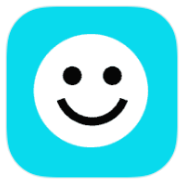
Notification Dots
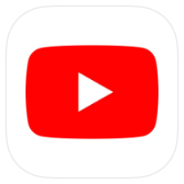
YouTube
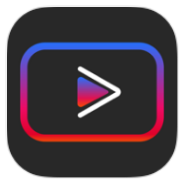
Vanced

Digital Compass

Math Tricks Workout
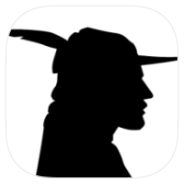
Ear Scout
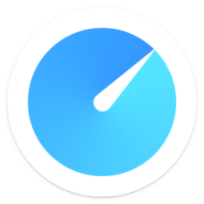
Browser
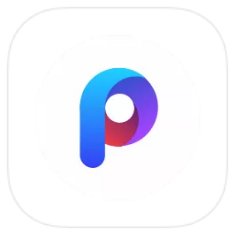
POCO Launcher
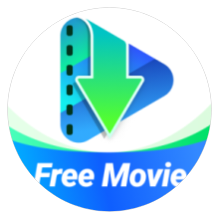
MovieBox
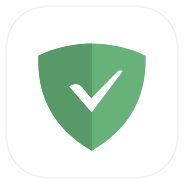
AdGuard
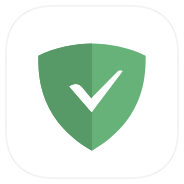
AdGuard
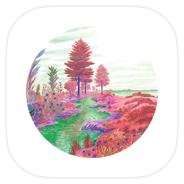
Zoomquilt
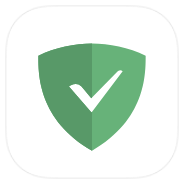
AdGuard
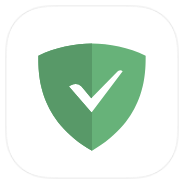
AdGuard

Solid Explorer
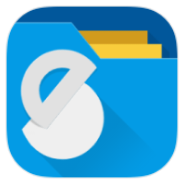
Solid Explorer
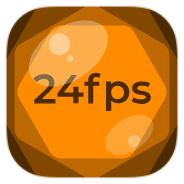
mcpro24fps

Picsart
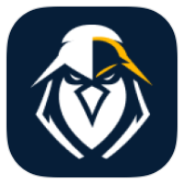
eEagle VPN
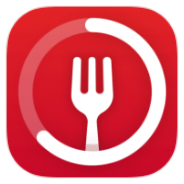
Fasting Tracker

VK X
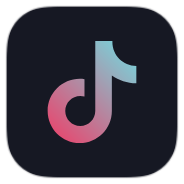
TikTok

TikTok Plugin
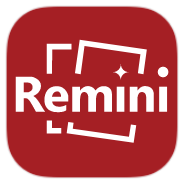
Remini
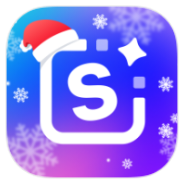
SnapEdit
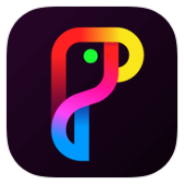
DoFoto AI Photo Editor & Collage
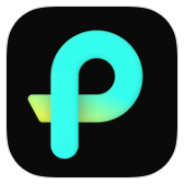
AIFoto
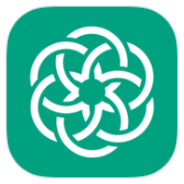
Chat Smith

To-do List
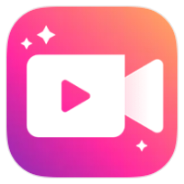
Filmigo
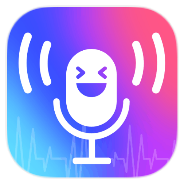
Voice Changer
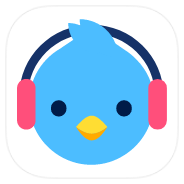
Lark Player
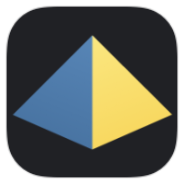
Pyramide
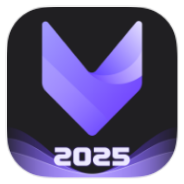
VivaCut
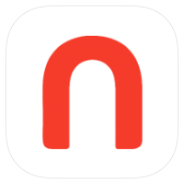
Comfer

Encrypted Notes
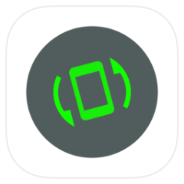
Force Rotation
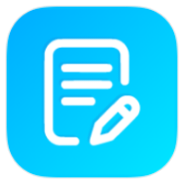
Test Maker - create question quiz
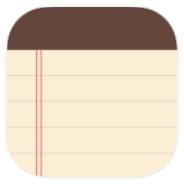
BasicNote
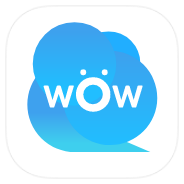
Weawow
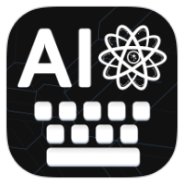
AI Keyboard
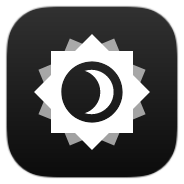
BlackOut

FolderSync

HiPER Scientific Calculator
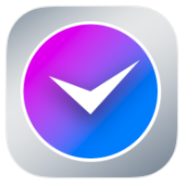
The Clock
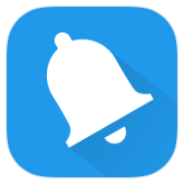
Caynax Hourly Chime
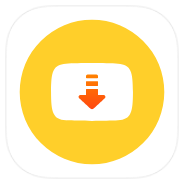
Snaptube
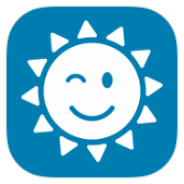
YoWindow
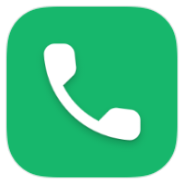
Phone

Termux:Monet
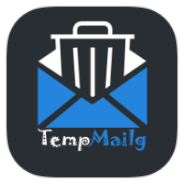
Temp Mail
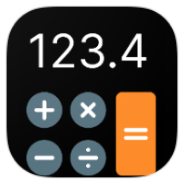
Clean Calculator
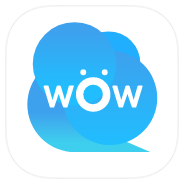
Weawow

GetApps
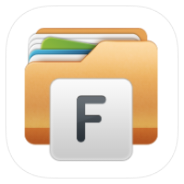
File Manager +
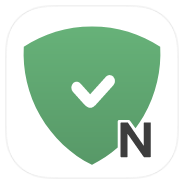
AdGuard
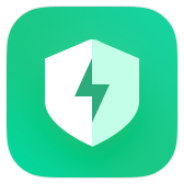
Security
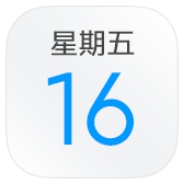
Calendar
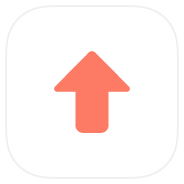
System apps updater
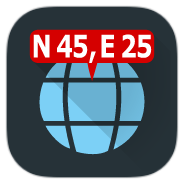
Map Coordinates
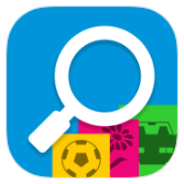
picTrove
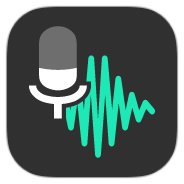
WaveEditor

WaveEditor

Math&Logic
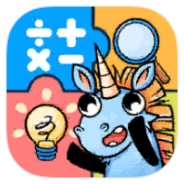
Math&Logic

Vyapar
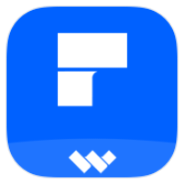
PDFelement

Night Player
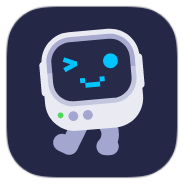
Mimo

MySword for Android

Xnxx

Gamedeck

Logo Maker
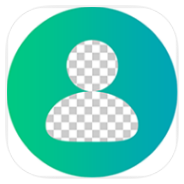
Background Eraser
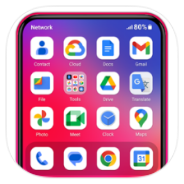
HiPhone Launcher
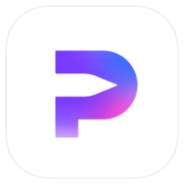
HiPaint
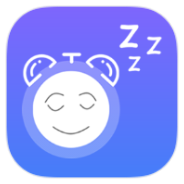
Smart Alarm
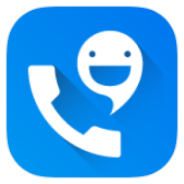
CallApp
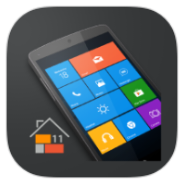
Win 11 Launcher

SuperVPN
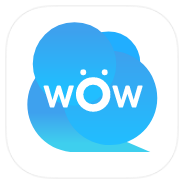
Weawow

File Manager +
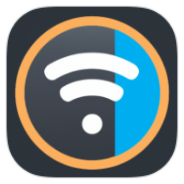
WiFi Analyzer Pro

oxproxion
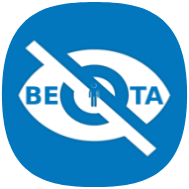
InviZible Pro

Happ
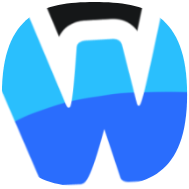
Wafrn
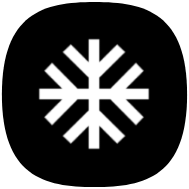
Xed-Editor

SimpleX
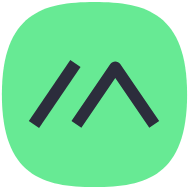
Meshtastic
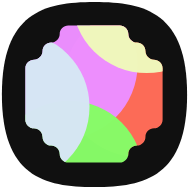
URnetwork
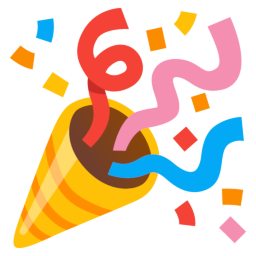
Party UP!
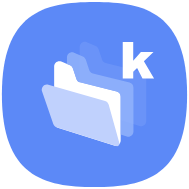
kDrive
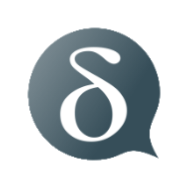
Delta Chat

Infomaniak Mail

De1984